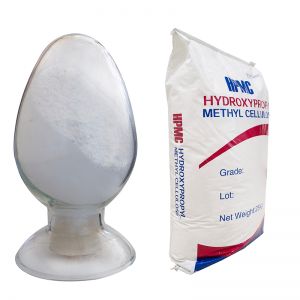Hydroxypropyl methylcellulose (HPMC) is hypromellose and widely used compound in various industries, including pharmaceuticals and dietary supplements. This substance is commonly found in supplement formulations due to its unique properties and numerous benefits. In this comprehensive exploration, we’ll delve into the origins, properties, functions, and potential advantages of hydroxypropyl methylcellulose in supplements.
1. Introduction to Hydroxypropyl Methylcellulose (HPMC)
Hydroxypropyl methylcellulose, often abbreviated as HPMC or hypromellose, is a semisynthetic polymer derived from cellulose. Cellulose, a complex carbohydrate found in the cell walls of plants, serves as the primary structural component in their cell walls. Through a series of chemical modifications, cellulose can be transformed into hydroxypropyl methylcellulose, which retains some of the original cellulose structure while incorporating hydroxypropyl and methyl groups.
2. Properties of Hydroxypropyl Methylcellulose
a. Water Solubility and Gelling Properties
One of the key properties of HPMC is its water solubility, making it an ideal ingredient for formulations requiring dissolution in water. Additionally, HPMC has the ability to form gels when mixed with water, providing a valuable tool for creating various formulations with desired textures and consistencies.
b. Viscosity Control
HPMC is known for its viscosity-modifying properties. Different grades of HPMC can be utilized to control the viscosity of solutions, suspensions, and emulsions, offering formulators precise control over the texture and flow properties of their products.
c. Film-Forming Characteristics
HPMC exhibits film-forming properties, making it useful in the creation of coatings for tablets and capsules. This characteristic is particularly relevant in the pharmaceutical and supplement industries, where the controlled release of active ingredients is crucial for optimal therapeutic effects.

3. Functions of Hydroxypropyl Methylcellulose in Supplements
a. Capsule and Tablet Coating
One of the primary functions of HPMC in supplements is as a coating material for capsules and tablets. The film-forming ability of HPMC ensures that the active ingredients are protected, facilitating controlled release and improved stability. Moreover, the use of HPMC in coatings helps mask the taste and odor of certain supplements, enhancing the overall consumer experience.
b. Binder and Disintegrant
In tablet formulations, HPMC can serve as both a binder and a disintegrant. As a binder, it helps hold the ingredients together, ensuring the tablet maintains its structural integrity. Conversely, as a disintegrant, HPMC promotes the rapid breakup of the tablet into smaller particles upon contact with water, facilitating the release and absorption of the active ingredients.
c. Controlled Release and Drug Delivery
The film-forming and viscosity-modifying properties of HPMC play a crucial role in controlled-release formulations. By encapsulating active ingredients within an HPMC matrix, the release of these compounds can be extended over time, resulting in a sustained and more predictable delivery. This is particularly advantageous in supplements where a prolonged release of nutrients is desired.
d. Improved Bioavailability
HPMC can contribute to enhanced bioavailability of certain ingredients. Through its role in controlled release and improved dissolution properties, HPMC can optimize the absorption of nutrients in the gastrointestinal tract, maximizing their availability for systemic circulation.
4. Regulatory Considerations and Safety
HPMC has a long history of use in pharmaceuticals, food products, and dietary supplements. It is generally recognized as safe (GRAS) by regulatory authorities, including the U.S. Food and Drug Administration (FDA) and the European Food Safety Authority (EFSA). However, it is essential for manufacturers to adhere to regulatory guidelines and quality standards when incorporating HPMC into supplement formulations.
5. Conclusion
hydroxypropyl methylcellulose (HPMC) is a multifaceted compound that finds widespread application in the formulation of dietary supplements. Its unique combination of water solubility, viscosity control, film-forming ability, and other properties makes it an invaluable ingredient for achieving specific characteristics in supplement products. From capsule and tablet coatings to controlled-release formulations, HPMC plays a pivotal role in enhancing the stability, efficacy, and overall consumer experience of dietary supplements. As the demand for innovative and effective supplement formulations continues to grow, the versatile nature of HPMC ensures its continued prominence in the field of dietary supplementation.
Post time: Nov-23-2023
